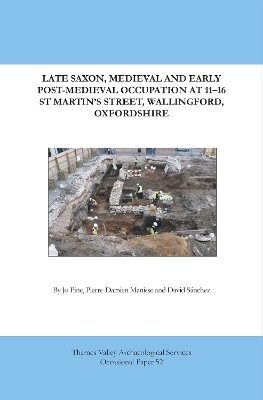This volume presents the results from archaeological investigations carried out betwen 2017 and 2020 in advance of development on two adjacent sites in the centre of Wallingford which revealed a sequence of deposits indicating almost continuous occupation from late Saxon times until the present. At 11-12 St Martin’s Street, a mitigation strategy was drawn up to preserve in situ the majority of archaeological deposits by foundation design, and only small areas requiring deeper groundworks were excavated. At 13–16 St Martin’s Street, more of the site had to be excavated. The earliest features (probably 10th to 11th century AD) included rubbish pits and buildings with cellars, and remarkably similar landuse continued through the 12th to 14th centuries. There is less evidence for 15th-century occupation but this may have been removed by the early post-medieval remodelling which probably saw the site in use as a garden. The later post-medieval period saw the site once more built on. The site’s assemblage of animal bones sheds light on the diet of the inhabitants in the earlier periods, and provides some evidence for horn-working and skin processing. While the other finds recovered point to a fairly low-status urban site in all phases, there are hints from the animal bones that the later Saxon inhabitants may have been more affluent.
- ISBN13 9781911228691
- Publish Date 23 January 2024
- Publish Status Active
- Publish Country GB
- Imprint Thames Valley Archaelogical Services Ltd
- Format Paperback
- Pages 109
- Language English
